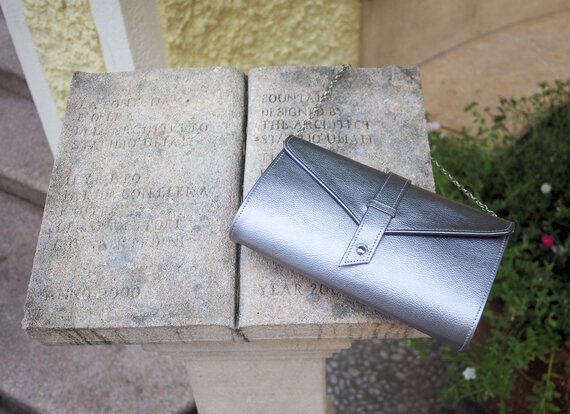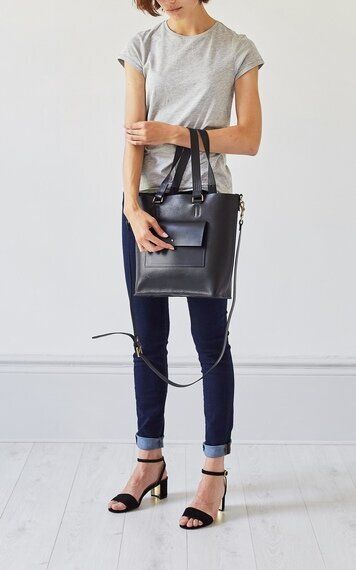Unless you're a cave-dwelling ascetic or a self-denying Spartan, chances are you like nice things. Most of us appreciate quality when we experience it and know how to identify it on a rail. The price tag is usually a giveaway and few of us expect luxury without having to give something in return. But our preparedness to cough up cash is balanced by expectation too. A high price tag is (should be) justified by true magnificence, which few of us can afford. We pay with the assumption that we know what we're buying and where it was made. This explains why some of us (those who can) shell out four figure sums of money for a pair of stilettos or a handbag, with the premise that the price tag is justified by solid brand values, heritage, skilled craftspeople and superior materials. We like to imagine that an Italian luxury accessories brand or a British 'heritage' brand will each be 'made in' their respective homelands.

Copyright free
But luxury brands are all over the place when it comes to disclosing where their products are made. All recognise the potential advantages of full disclosure but few -- even those boasting a manufacturing heritage -- exploit it. The majority go for partial disclosure.
Earlier this year, The Guardian exposed Louis Vuitton for producing the majority of its shoes in Romania, not Italy (according to EU law, if shoes are "finished" in France or Italy, the company can still qualify for the sought-after 'made in' tags). Further, most of the world's leading designer luxury brands rank poorly in Fashion Revolution's 2017 Fashion Transparency Index. In the 2017 report, all of the "luxury" brands score less than 30 out of a possible 100, and the majority achieve a dismal rating of less than 10.

Copyright free
As I recently commented in Why Slow Fashion is picking the Pace, more and more fashion consumers are demanding transparency - in materials, production location/social impact, and even profit margins. They're willing to pay high prices for high-quality items, especially if they have an understanding of the history and impact of the product they're purchasing. We like a story. It's a shift, to a purchase being driven less by brand and more by information.
What's in my Wardrobe?
Echoing the #whomademyclothes social-media backlash to the Rana Plaza disaster, what do we really know about the history of those items in our wardrobe? Is there a dark story confusing price, perception and product lurking in our closet? If we pay 10, 20 or even a hundred times more than an item cost to produce, does the price tag correlate with the magnificent, luxury 'story'?
According to marketing professor, and luxury industry specialist, Vincent Bastien, it doesn't matter if the products are actually made in China or Transylvania. As long as the image of "heritage, country and craftsmanship" is continuously reaffirmed and nurtured, the prices can stay high. "The more [the product] is perceived by the client to be a luxury, the higher the price should be."
That price bears almost no relation to manufacturing costs and that fashion remains the 2nd largest polluter globally, after oil, really doesn't have much hanger appeal. It's the result of very deliberate effort, says Dana Thomas, author of the bestselling book 'Deluxe: How Luxury Lost its Lustre'. She's in no two minds about what drives the industry:
"[Their] sole motivating factor is profits. The designers can dream up beautiful designs, but the number crunchers will cut costs wherever they can to raise the profit margin." How else to fund those prestigious flagship stores and indulgent advertising campaigns?

Infographic created & supplied by Waremakers
Scaling up Sustainability
A direct relationship with cotton farmers, supporting Mongolian goatherds - it's all well and good, but conscious consumerism needs to be commercial. An industry founded upon consumption needs to cut its cloth carefully. Diana Verde Nieto of Positive Luxury, an online trust-mark scheme that rewards fashion houses and jewellers making a positive impact on society and the environment says "the objective of sustainability in fashion is not just creating a lot niche brands". "If sustainability is to take root, it must be adopted by corporations and embedded into their very structures".
As consumer behaviour shifts from excess to 'Buy Less; Buy Better', many brands are successfully bridging the gulf between image and value. It's certainly the case with several high street retailers now embracing sustainability as part of their business model. To namecheck a couple that are completely transparent in production, sharing all manufacturing and production details, let's mention - Thought Clothing and Gandys. And, to give credit where it's due, two corporations at the opposite ends of the luxury barometer are beginning to change the way fashion is produced on the scale that Nieto is talking about: Kering, the French luxury-goods giant that owns 16 brands including Stella McCartney, Gucci and Alexander McQueen; and H&M with its Conscious Collection together with its Global Change Award. And, in fairness, LVMH, which owns Louis Vuitton, has partnered with a Belgian tannery, marrying sustainability with its quest for the best materials and shifting some of the culture of secrecy.
Making the Grade

Image supplied by Waremakers: Coline Bag in Yellow, by Bleu de Chauffe
While exploring sustainable fashion, I've worked with some progressive and innovative brands, speaking to buyers and retailers, and monitoring the shift of consumer behaviour. The subject has introduced me to companies such as Waremakers, representing independent producers of high quality goods and providing in-depth information about each of their partners. Ironically, many of the European producers they work with use the same materials and manufacturing process as the big designer brands in France and Italy, but have a fraction of the mark-up. It's a fact echoed in the cases of many Private Label British manufacturers who, not only supply premium High Street retailers but, produce their own superior collections. These will have a higher price tag than the top end retailers they supply, while coming in at a fraction of the price of those luxury 'designer' brands. In one case - a leather handbag manufacturer who supplies premium High Street retailers - they will use AA Grade leather for their own label, while using Grade A for the Private Label products. This enables the retailer to maximise margins and cut costs. The growing number of sub-brands within 'luxury' fashion houses will be cutting costs and catering to demand by downgrading their materials this way.

Image supplied by Nadia Minkoff: The Newington bag in Gunmetal leather, 100% grade AA Italian leather, handmade in the UK by Nadia Minkoff
To cite Oscar Wilde, too many of us know the price of everything, but the value of nothing. Thankfully, transparency is now determining price tags much more than before and consumers will vote with their purses. Economics of scale state that it's the global companies who have the most capacity to foster systemic change, so let's hope that 'luxury' leads the way.

Image supplied by Waremakers: Eleanor Pocket Tote in Black, by Grace Gordon
Consumers care about the origin of their products. The Chinese -- the largest nation of luxury consumers in the world -- want their watches to be Swiss, their perfumes and cosmetics to be French, their cars to be German and their bags and shoes to be either Italian or French. As a fashionphile and avid supporter of the industry, I want the fairy-tale as much as the next woman; I want my heritage British brand to have Britishness in its DNA and my Italian heels to be made in the country of amore. We expect the quality of a 'luxury' item to be truly magnificent. This is, after all, one of the meanings carried by the Latin word "luxus" and how we can justify the extravagant purchase. The other Latin interpretation is "excess", which too has proven dismally accurate. Interestingly, the English meaning of 'luxury', in Elizabethan times, was "lust" or "lechery". But that's for another blog....
